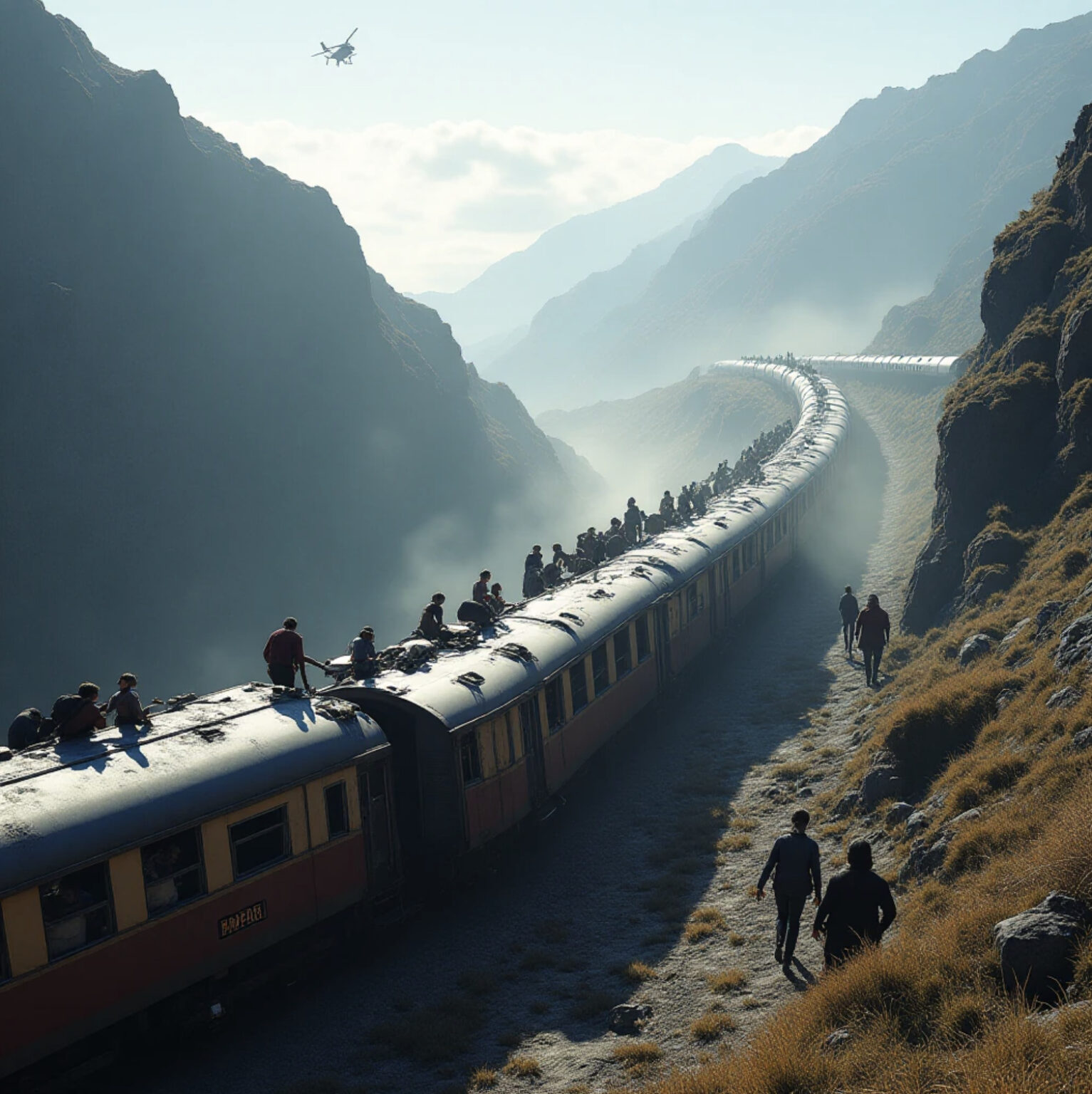On a crisp autumn morning, the sun was barely peeking through the horizon as passengers boarded the train at Milton Junction. The train, a sleek modern marvel of engineering, promised a peaceful journey across picturesque landscapes, from lush green fields to charming hamlets nestled in the valley. For many, this was a routine commute, while for others, it was the beginning of an eagerly anticipated adventure. With steaming cups of coffee in hand and newspapers folded under arms, passengers settled into their seats, unaware that their peaceful ride would soon veer into tragedy.
The train glided smoothly along the tracks, a testament to precision and efficiency. Conversations hummed softly, punctuated by the gentle clatter of wheels on rails. Laptops clicked open, and the rhythmic sway of the carriage lulled a few passengers into early-morning naps. The world outside blurred into a tapestry of colors—a serene backdrop for the day ahead.
However, as the train approached the narrow corridor between the Pinewood Hills, the tranquility shattered in an instant. A spine-chilling screech reverberated through the carriages, and the train lurched violently. Panic ensued as passengers were thrown from their seats, belongings cascading through the air. The once orderly aisles became chaotic as the train careened off its tracks, culminating in a cacophonous crash.
Emergency responders arrived swiftly, their sirens wailing against the backdrop of chaos. The scene was heart-wrenching—carriages lay mangled, smoke billowing into the sky. Survivors staggered away, dazed and injured, while others were trapped within the twisted metal, awaiting rescue.
In the aftermath, investigators worked tirelessly to unravel the cause of the derailment. Preliminary reports suggested a malfunction in the automated signaling system. The train, traveling at a high speed, had received incorrect data, directing it onto a maintenance track where unfinished repairs had left the rails unstable.
Further investigation revealed an unsettling oversight—scheduled system updates had been delayed due to budget constraints. The aging infrastructure, once a hallmark of safety, had become a ticking time bomb. The combination of outdated technology and human error had turned a peaceful ride into a nightmare.
As the investigation continued, the tragedy sparked a wave of public outcry. Families mourned the loss of loved ones, while survivors grappled with the trauma of the event. Communities rallied together, offering support and demanding accountability. The incident became a catalyst for change, highlighting the urgent need for investment in infrastructure and safety protocols.
In the wake of the derailment, transportation authorities pledged to overhaul the system. New safety regulations were implemented, and funds were allocated for comprehensive upgrades to prevent such tragedies in the future. The tragedy served as a somber reminder of the delicate balance between progress and safety, urging society to prioritize the latter without compromise.
As the sun set on that fateful day, casting a golden hue over the landscape, the community took a moment to remember the lives lost. Candles flickered at impromptu memorials, casting soft light on tear-streaked faces. In their hearts, there lay a resolve to honor the memory of those who perished by ensuring that such a tragedy would never repeat. The peaceful ride that turned into a nightmare became a poignant chapter in the story of resilience and renewal, etching its lessons into the annals of history.



